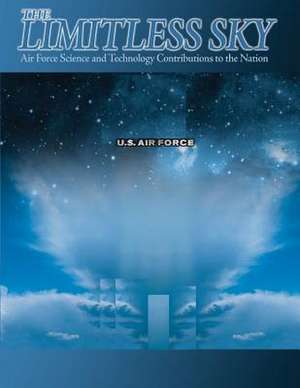The Limitless Sky
Autor Office of Air Force History, Us Air Forceen Limba Engleză Paperback
| Toate formatele și edițiile | Preț | Express |
|---|---|---|
| Paperback (2) | 147.16 lei 3-5 săpt. | |
| CREATESPACE – | 147.16 lei 3-5 săpt. | |
| CreateSpace Independent Publishing Platform – | 363.85 lei 3-5 săpt. |
Preț: 147.16 lei
Nou
Puncte Express: 221
Preț estimativ în valută:
28.16€ • 30.71$ • 23.74£
28.16€ • 30.71$ • 23.74£
Carte disponibilă
Livrare economică 03-17 aprilie
Preluare comenzi: 021 569.72.76
Specificații
ISBN-13: 9781508687337
ISBN-10: 1508687331
Pagini: 272
Dimensiuni: 216 x 279 x 14 mm
Greutate: 0.64 kg
Editura: CREATESPACE
ISBN-10: 1508687331
Pagini: 272
Dimensiuni: 216 x 279 x 14 mm
Greutate: 0.64 kg
Editura: CREATESPACE
